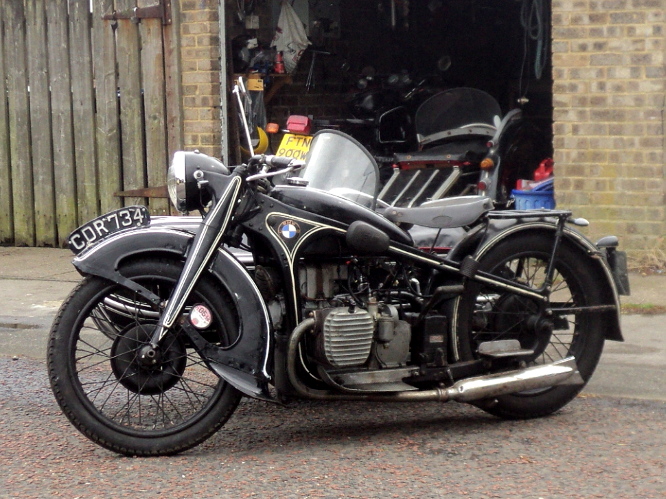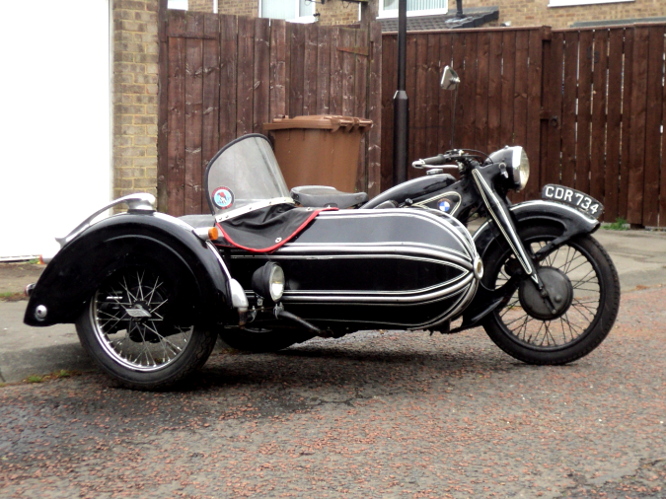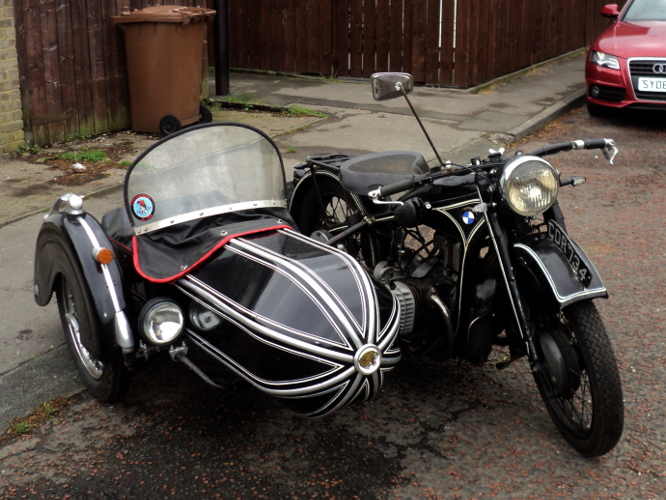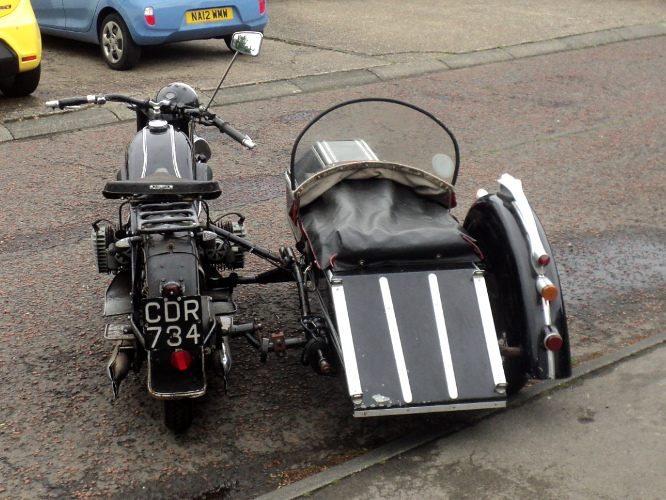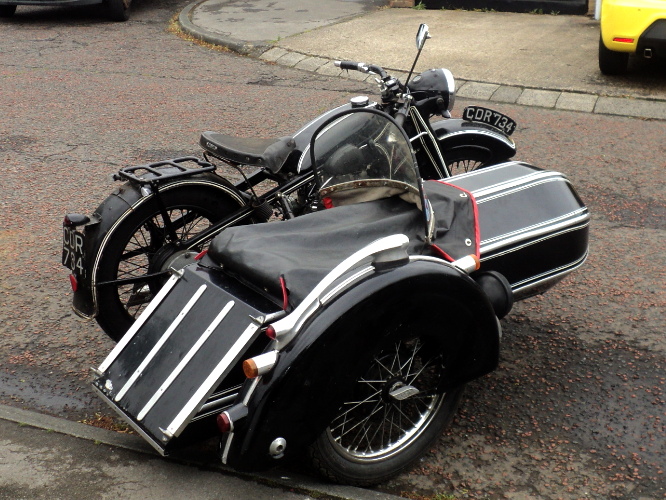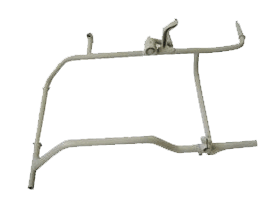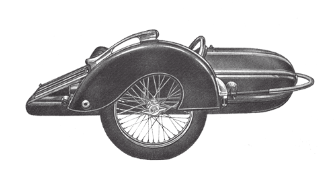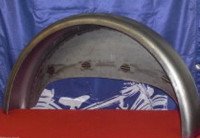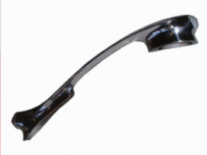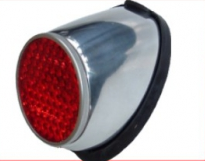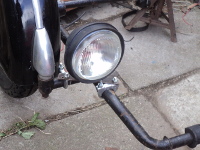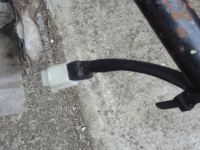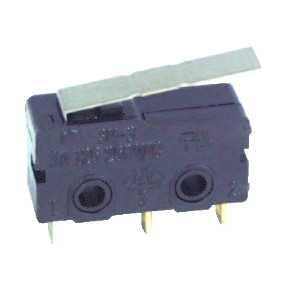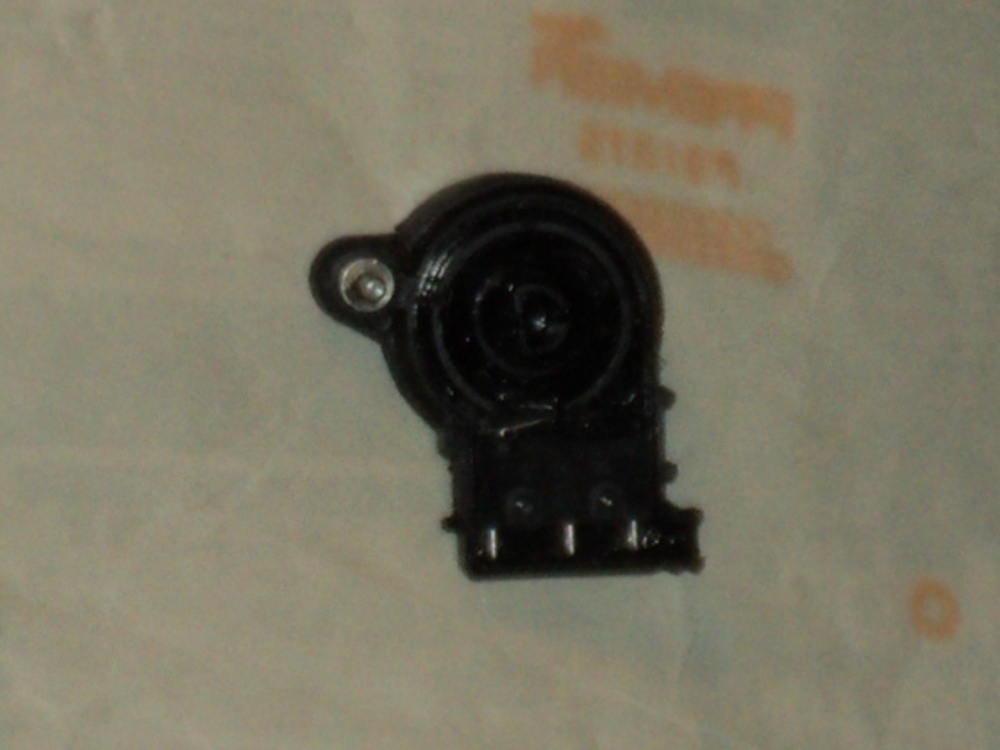Last time out on the BMW R12 I ran into problems.
What happened was that she was blowing oil out from in front of the magneto and the entire left side of the motor unit was dripping with oil. It got onto the HT lead on that side as well and so was giving an intermittent misfire on that side, she’d run happily along the straight and level but show her a hill and the misfire appeared!.
Of course when the job was thought out and planned there were other items called for as well as those on the “Wish List” of items marked up as “I’ll get those next time I’m ordering something” so I wound up with a bill of around £100!, fortunately a couple of “extra” items were “Not currently available, Please re-order” which cut the bill almost by half and began a new “Wish List”.
When I had a closer look I could see it was blowing from the outside of the seal carrier plate so a new cork gasket seemed called for.
Once the bits arrived it was down to work.
First thing was to get the sidecar off! Fortunately it’s mounted using Steib type DIN Standard fittings and the electrics are through a plug and socket connection so that was not a difficult or prolonged job, just a bit awkward when working on your own.
Then it was a case of clear the decks for action!. The tank had to come off to get easy access to the top of the engine unit, not an essential but it makes life SO much easier it’s worth the hassle.
But to remove the tank the seat has to come of first, and that bolt at the saddle nose is masked by the nose of the saddle and so is fiddly to undo and get out.
Now comes the not so obvious!. To replace the gasket I have to remove the magneto, which means it will have to be re-timed and on an R12 there are two ways to do this.
One way is to remove a cylinder head and set the timing 12mm BTDC on No. 1 cylinder. This means sacrificing an expensive head gasket. Not only that but on an R12 the head nuts are in between the cylinder finning, are awkward to reach and only accessible with an open-end spanner.
However there is the option of timing off the flywheel.
Some, but not all, machines have their flywheels marked for TDC and full advance. These marks are on the rear face of the flywheel and to access them means removing the gearbox, which means splitting the drive shaft.
My flywheel is so marked and I decided to go this route.
So, let’s get the gearbox off, Easy there’s only the two bolts through the clutch bell housing at 3 and 9-o-clock! If Only!
First is to get the shaft off, slack off the backlash to access the spring clip behind the drive flange, “persuade” it out of its groove (easier said than done!) then telescope and remove the shaft after removing the two nuts at the bevel box.
Next is to undo the two bell housing bolts, plus the one hidden under the engine at the 6-o-clock position!, I’ve seen a pair of crankcases that had been broken through forgetting this one!.
The gearbox still won’t come out yet because the long rear engine bolt goes through its housing!, so that has to come out and we’re not done yet! There are a pair of studs facing downwards in the bell housing itself at just below the 3 and 9-o-clock positions that allow the housing to clamp onto the gearbox and that need to be loosened as well before the gearbox will come out, promptly followed by an expletive as I find I’d forgotten that I’d put an earth lead onto one of the casing stud nuts!.
That’s the decks cleared for action, and it’s taken longer to do than the repair does.
At the top front of the engine is a small cover held by two bolts, remove this and you have access to the magneto sprocket.
Book method now is to split the timing chain, undo the magneto securing strap and slide the magneto out, however it is also possible to tilt the magneto and gain just enough play in the chain to slip it over the sprocket and so remove the magneto without having to remove either the split link, or the sprocket securing nut and washer, with the attendant risk of dropping parts into the engine!.
Once the magneto was off the problem became obvious, the cork sealing washer was compressed to the point of having no “give” and it was hard enough to strike a match on! No wonder it wasn’t sealing!.
Not only that, but there is a coil spring goes between the magneto and the seal housing to compress this cork gasket against the engine casing and this was “tired” to say the least! Fortunately I’d put a replacement for this spring on the list!
So now all that had to be done was to remove the magneto sprocket, replace the coil spring, refit the sprocket (leaving it loose), then grease up the new cork seal and refit the magneto.
Now came the fiddle! Retiming the ignition!
You set the timing on No.1 cylinder, the one on the right hand side so it’s turn the engine over till No.1 is on compression stroke and the timing advance marks are aligned, that’s step 1.
Step 2 is to set the magneto onto No.1 as well, this is with the rubbing heel of the points pointing towards the left and adjust the magneto so that with the ignition lever on full advance the points are JUST breaking, simplest way for this is a slip of cigarette paper (Rizla Blue are thinnest and best for the job) nipped between the points and then, when the points grip on it is JUST eased, to lightly nip up the magneto sprockets securing nut.
Now turn the engine over again a few times and then check that the points are still JUST breaking as the timing marks align and if they are then you can fully tighten the sprocket securing nut and replace the sprocket cover.
Now it’s just reverse the disassembly, offer up the gearbox with the usual hassle to get the clutch splines to match, and bolt the gearbox into place. Refit the shaft, slide the drive flange pins into the Hardy disc.
Now you just have to refit the spring clip into its groove, set the freeplay on the shaft to between a half and one millimeter and then all that’s left is to refit the tank and seat and we’re ready to roll.
After a test ride solo the sidecar has to go back on and here’s the beauty of the Steib, DIN Standard fittings, it is not necessary to re-align the sidecar the original alignments are still good, they have not been disturbed by the removal/replacement.

